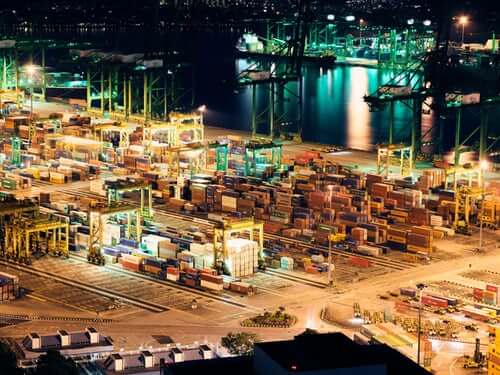
What is Supply Chain Management?
In a sentence, supply chain management is a broad set of approaches that seek to minimize cost, while meeting service level requirements of a product; from raw material suppliers to manufacturing to customer. Please note though, that one sentence provides a mile-high perspective and supply chain management is much more complicated and intricate, as it is a series of activities that seek to integrate all of the processes involved with the evolution of a product, to include:
1. Procurement of raw materials,
2. Movement of those materials to manufacturing,
3. Manufacturing process, to include the various stages of a product in the process
4. Movement to warehousing
5. Storage of the product in a warehouse or distribution center
6. Distribution from warehouse to retailers, stores, or the consumer
There are a number of factors that are driving the need for improvements in the supply chain. Technology is a significant driver. Technology has changed customer expectations; they expect to have what they want, when they want it - and if company A can't meet those expectations, the customer will quickly go to company B. Technology has also been leveraged in business to drive down costs, so in the competitive business environment companies must find ways to continue to bring costs down while raising their level of service to meet customer expectations. These two objectives have an inverse relationship; as you try to improve customer service you incur costs, while you reduce costs you will likely reduce service levels.
Supply Chain Management professionals analyze all stages of a product in the product life cycle to find ways to reduce cost and move products through the pipeline as efficiently as possible, while attempting to preserve customer service levels. One area in particular that will get significant attention is the movement, or logistics, of goods; whether it be the raw materials required to manufacture a product, or the movement of the end product itself. In looking at raw materials, a business may find a great price overseas, but those goods must then be moved by barge across the ocean, then go through customs, then, will the raw material be placed on a train or will they go by truck? To transport the goods by barge may take 10 days longer than if the company uses a local raw material provider (albeit, with a higher price). This will require a cost benefit analysis and customer service levels will need to be taken into consideration. Additionally, there is a cost benefit of moving the raw material by train vs truck; train may be cheaper, but it will take longer... whereas by truck may be more expensive, but it will arrive more quickly.
In addition to the movement of a product, inventory storage is an area that is analyzed. With large distribution networks and facilities spread throughout an area or region, warehouse space is an important consideration. The cost of warehousing is expensive, and each warehouse has numerous additional overhead costs, to include people. Finding the optimal number of warehouses, their location, and the required space to manage "just the right" inventory to meet customer service levels all play an important role in evaluating the supply chain.
All of these factors require an integrated approach from all levels of a business; in scope and breadth. To implement an effective strategy supply chain managers must have a solid understanding of the business objectives, requirements, production processes, warehousing and distribution centers, and suppliers and customers.
Supply Chain Problems
Due to the complex networks involved within a given supply chain, especially as geographically dispersed suppliers and facilities are taken into consideration, there are conflicting objectives within each activity. For example, a supplier would like manufacturers to purchase large, stable quantities with a degree of flexibility in the delivery date, while manufacturers seek long production runs and require flexibility based on their customer needs (typically a result of changing demand patterns).
Additionally, a manufacturer would like to produce large quantities of their good, seeking to capture greater economies of scale, but this creates large inventories, and warehouses and distribution centers want less inventory due to the carrying costs associated with the inventory being maintained on the shelf. What further complicates this conflict in objectives is carrying less inventory has an indirect consequence; it creates greater costs in transportation, as the movement of those goods are shipped less efficiently than if a full shipment of goods were to be delivered.
Each stage in the supply chain offers numerous opportunities for evaluation and cost savings, but requires significant analysis and understanding of the interrelationships between how each stage impacts the other. In addition to conflicting objectives, there are other contributing factors that impact the supply chain and result in the need for awareness and evaluation; for example, the bullwhip effect.






